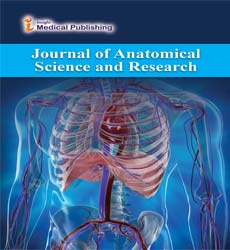Spleen:The Blood Filter
Atenello Statin*
1Department of Biological Science, University of RSA, Kimberley, South Africa
- *Corresponding Author:
- Atenello Statin
Department of Biological Science, University of RSA ,Kimberley, South Africa
Tel: +27 (0) 798735393
E-mail: statinbioA@se
Received Date: June 28, 2021; Accepted Date: July 12, 2021; Published Date: July 19, 2021
Citation: Statin A (2021) Spleen: The Blood Filter. J Anat Sci Res Vol. 4 No.3:e002.
Editorial Note
The spleen is an organ found in all vertebrates. Comparative in design to a large lymph node, it acts basically as a blood channel. The spleen assumes significant parts as to red platelets (erythrocytes) and the resistant system. It eliminates old red platelets and holds a save of blood, which can be important if there should arise an occurrence of hemorrhagic shock, and furthermore reuses iron. As a piece of the mononuclear phagocyte framework, it utilizes hemoglobin eliminated from senescent red platelets (erythrocytes). The globin part of hemoglobin is degraded to its constitutive amino acids, and the haem divide is processed to bilirubin, which is eliminated in the liver.
The spleen combines antibodies in its white pulp and eliminates antibody coated bacteria covered microscopic organisms and immunizer covered platelets via blood and lymph hub dissemination. These monocytes, after moving to harmed tissue (like the heart after myocardial localized necrosis), transform into dendritic cells and macrophages while advancing tissue healing. The spleen is a focal point of action of the mononuclear phagocyte framework and is undifferentiated from an enormous lymph hub, as it's anything but an inclination to specific diseases.
The spleen is underneath the left part of the diaphragm, and has a smooth, convex surface that faces the diaphragm. It is underneath the ninth, tenth, and eleventh ribs. The other side of the spleen is divided by a ridge into two regions: an anterior gastric portion, and a posterior renal portion. The gastric surface is directed forward, upward, and toward the middle, is broad and concave, and is in contact with the posterior wall of the stomach. Below this it is in contact with the tail of the pancreas. The renal surface is directed medialward and downward. It is somewhat flattened, considerably narrower than the gastric surface, and is in relation with the upper part of the anterior surface of the left kidney and occasionally with the left adrenal gland.
Near the middle of the spleen is a long fissure, the hilum, which is the point of attachment for the gastrosplenic ligament and the point of insertion for the splenic artery and splenic vein. There are other openings present for lymphatic vessels and nerves.Like the thymus, the spleen possesses only efferent lymphatic vessels. The spleen is part of the lymphatic system. Both the short gastric arteries and the splenic artery supply it with blood.The germinal centers are supplied by arterioles called penicilliary radicles. The spleen is innervated by the splenic plexus, which connects a branch of the celiac ganglia to the vagus nerve.The underlying central nervous processes coordinating the spleen's function seem to be embedded into the Hypothalamic-pituitary-adrenal-axis, and the brainstem, especially the subfornical organ.
The spleen is unique in regard to its advancement inside the gut. While the greater part of the gut organs are endodermally inferred, the spleen is gotten from mesenchymal tissue.Specifically, the spleen shapes inside, and from, the dorsal mesentery. Nonetheless, it actually shares a similar blood supply the celiac trunk as the foregut organs.
Enlargement of the spleen is known as splenomegaly. It may be caused by sickle cell anemia, sarcoidosis, malaria, bacterial endocarditis, leukemia, pernicious anemia, Gaucher's disease, leishmaniasis, Hodgkin's disease, Banti's disease, hereditary spherocytosis, cysts, glandular fever (mononucleosis or 'Mono' caused by the Epstein–Barr virus), and tumours. Primary tumors of the spleen include hemangiomas and hemangiosarcomas. Marked splenomegaly may result in the spleen occupying a large portion of the left side of the abdomen.
Open Access Journals
- Aquaculture & Veterinary Science
- Chemistry & Chemical Sciences
- Clinical Sciences
- Engineering
- General Science
- Genetics & Molecular Biology
- Health Care & Nursing
- Immunology & Microbiology
- Materials Science
- Mathematics & Physics
- Medical Sciences
- Neurology & Psychiatry
- Oncology & Cancer Science
- Pharmaceutical Sciences
